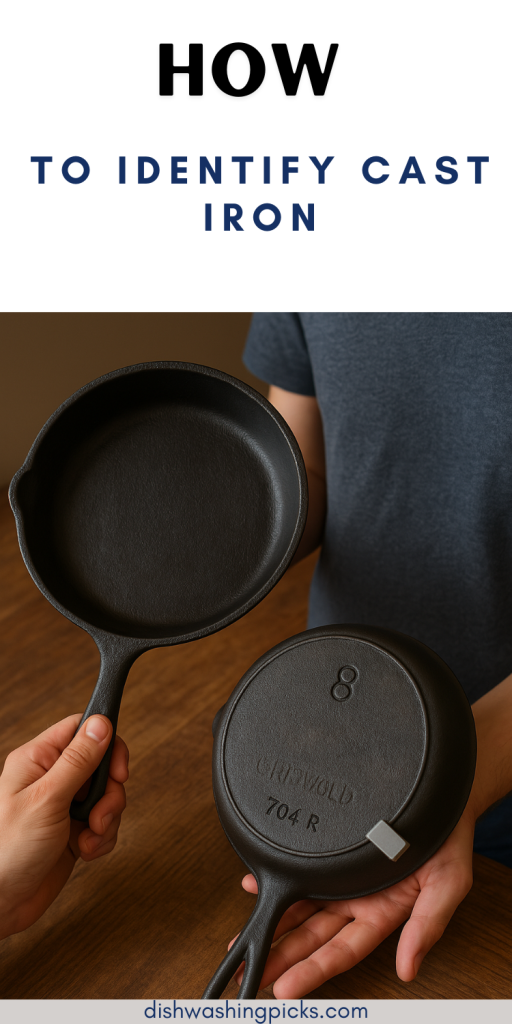
So, you’ve got a piece of cookware in your kitchen that looks like it could withstand a zombie apocalypse. It’s heavy, it’s solid, and maybe it has a little rust on it—but you’re wondering: Is this cast iron? Or is it just some cheap imitation pretending to be tough? Well, you’re in the right place because today, we’re diving into how to identify cast iron—without pulling out any fancy magnifying glasses or getting into complex metallurgy jargon.
Let’s break it down and make it simple, fun, and practical.
What’s the Deal with Cast Iron Anyway?
Before we go identifying anything, let’s talk about why cast iron even matters. It’s been around for centuries (yes, centuries), and people still swear by it today. Why? Because it’s tough as nails, retains heat like a champ, and can make your food taste better. Imagine searing a steak on a non-stick pan versus a well-seasoned cast iron skillet. Huge difference, right?
But here’s the kicker: Cast iron is often passed down through generations. So, when you find something that looks like it could be cast iron, you want to know for sure, right?
Is It Really Cast Iron or Not?
Now, you might be staring at that pan or pot thinking, “Is this the real deal, or just some wannabe?” Here’s how you can tell.
1. The Weight Test
First up, grab it. If it feels heavy, like way heavier than you’d expect, it’s probably cast iron. A regular non-stick pan might feel light and easy to handle, but cast iron? It’s like holding a brick. It’s solid and dense. If you’re lifting a skillet that feels like it could double as a paperweight, that’s a good sign you’ve got cast iron on your hands.
2. Look for the Tell-Tale Color
Cast iron usually has that dark, matte finish. It can look a little rough around the edges, too. If it’s bare and unseasoned, it might look almost grayish or dull, but a well-seasoned cast iron skillet has a rich, glossy, deep black hue. It’s like the pan’s way of saying, “I’ve been around the block, and I’m ready to cook!”
But don’t be fooled! Some pieces of cast iron cookware might look a little off after years of use, so we’ll dive into some other tricks to be sure.
3. Check for Markings or Stamps
You know how vintage stuff has little stamps or logos that tell you where it came from? Cast iron does too! Flip that piece of cookware over and look at the bottom. Older cast iron, especially from famous manufacturers like Lodge or Griswold, often has the brand name or a model number stamped on the bottom. It’s like a secret signature from a bygone era. Some of these can even be worth a little extra cash if they’re particularly rare!
You might find “Lodge” or “Griswold” on the bottom of a pan, and that’s a pretty solid indicator that you’re dealing with cast iron. If it doesn’t have any markings, though, it’s not a deal-breaker—it just might be a little harder to tell.
4. The Magnet Trick
You might have heard this one before. Grab a magnet, and if it sticks to the surface, it’s cast iron. That’s because cast iron is magnetic (unlike some other metals like aluminum). So, the next time you’re at a thrift store or garage sale, just casually slip a magnet in your pocket and give it a test. No one will be the wiser!
5. The Clink Test
Take a spoon or a knife and gently tap the surface of the cookware. If you hear a ringing sound, then you’re likely holding cast iron. It has a certain kind of resonance to it because of its density. If it sounds more like a dull thud, you might be dealing with some other material.
Okay, now that you know how to identify cast iron, let’s talk about one more thing you’ll probably wonder: Why does it matter?
Why Does It Matter to Identify Cast Iron?
Well, besides the fact that it’s cool to know what you’re working with, identifying cast iron can help you take care of it properly. If you know it’s the real deal, you’ll want to treat it with the love it deserves—season it, clean it properly, and avoid doing things like washing it with soap (yikes). Plus, cast iron can be a long-term investment, and knowing its history can add to its charm.
How Do You Know What Type You Have?
If you’ve gone through all these steps and you’ve confirmed your piece is cast iron, congrats! But you might be wondering, what type do you have? Cast iron comes in various forms—skillets, Dutch ovens, griddles, even specialty pieces like cornbread pans. And, as mentioned earlier, you might find a vintage treasure that has a ton of character.
And if you’re buying cast iron, knowing what you have can help you pick the right tool for your cooking needs.
The Joy of Cast Iron
So, there you have it—your foolproof guide to identifying cast iron cookware. Whether it’s an old heirloom or a recent thrift store find, knowing how to spot the real deal helps you appreciate the craftsmanship and history behind it. Plus, you’ll feel like a total kitchen pro the next time you find a piece that’s perfect for searing a steak or baking a crisp cobbler.
Now, go ahead—pick up that pan, give it a test, and feel the weight of that history in your hands. You’ve got this!
